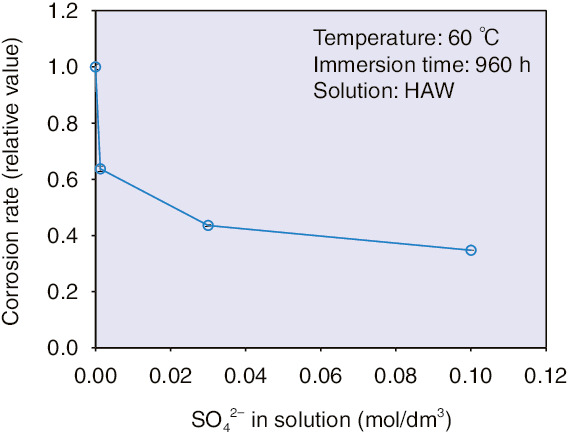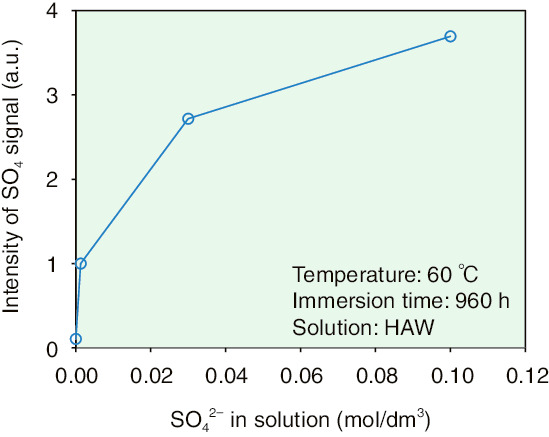
Fig.1-10 Corrosion morphology of SUS316L specimens in HAW with sulfate ions

Fig.1-11 Relation between the corrosion rate of SUS316L specimens and sulfate-ion concentration in HAW

Fig.1-12 Relation between the intensity of the SO4 signal and the sulfate-ion concentration in HAW
The spent fuel stored in the pools at the TEPCO’s Fukushima Daiichi NPS was exposed to injected seawater and may contain concrete fragments yielded from the explosion. Therefore, the influence of these impurities upon reprocessing needs to be investigated. It was reported that these impurities will move to the waste solution during the separation process. We have been investigating the effect of these impurities upon the corrosion of a high-activity-liquid-waste tank. In this study, the effect of sulfate ions, which are components of seawater and concrete, upon the corrosion behavior was investigated.
An immersion test in surrogate highly active liquid waste (HAW) was performed using SUS316L as a representative tank material. HAW contained nitric acid and surrogate fission products (ruthenium (Ru), cerium (Ce), neodymium (Nd), and vanadium (V) as a substitute for neptunium (Np).
Under all conditions, intergranular corrosion took place (Fig.1-10) and the corrosion rate was suppressed with increasing sulfate-ion concentration (Fig.1-11); the inhibition ratio also decreased. The result of X-ray photoelectron spectroscopy (XPS) indicated a sulfate on the surface of the specimens after the immersion test. The relationship between the intensity of the SO4 signal of the XPS spectrum and the concentration of sulfate ions in the solution is shown in Fig.1-12. With increasing sulfate-ion concentration, the intensity of the SO4 signal increased, but the rate of this increase tended to decrease.
The main factor affecting intergranular corrosion was thought to be Ru, which can have a high valance (+VIII). It has been reported that Ru has a significant effect upon corrosion; however, the slight addition of sulfate ions (approximately 1/100 of Ru concentration (0.1 mol/dm3)) drastically decreased the corrosion rate. This result implies that the contribution of direct interaction between Ru and sulfate ions is small. On the other hand, the correlation between the sulfate ions in HAW and the SO4 signal of XPS indicates that the dissolution reaction is suppressed by some compounds derived from sulfate ions. Inhibitions caused by sulfate ions were reported in pitting corrosion of stainless steel in NaCl solution, and a similar mechanism also seems to be working in this system.